Should you have flooring for your goat barn?
Flooring is not always necessary, as some goats prefer sleeping on dirt, but providing a good floor is beneficial. It insulates them from cold and gives them a dry living space, which reduces the risk of exposure to parasites and worms.
Wet conditions can foster infections of the hoof, which are very painful and can lead to hoof rot.
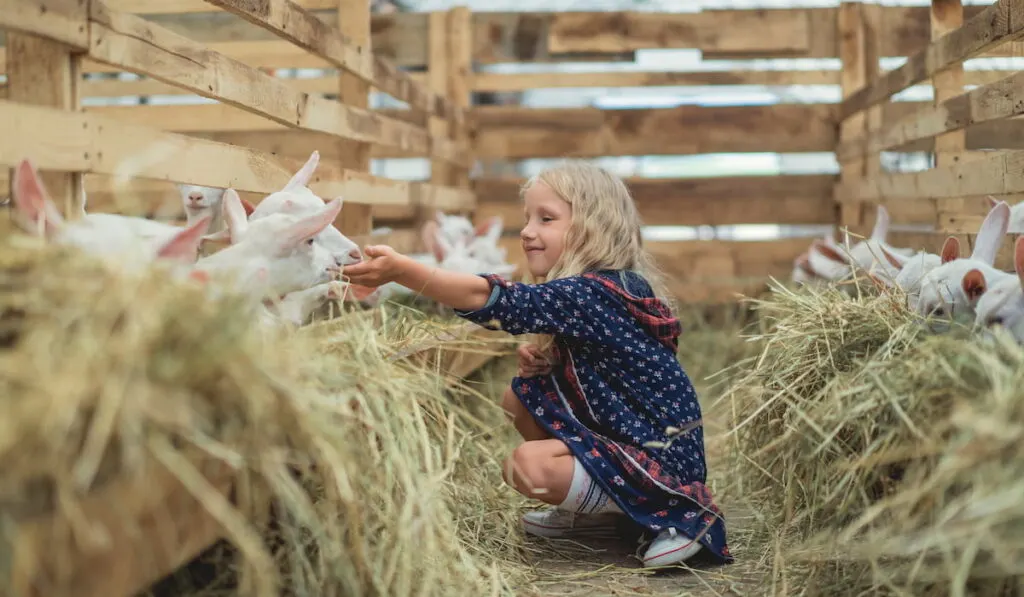
Consider choosing low-maintenance flooring that is easy to clean and dry, and one that protects your goats. Dirt usually absorbs urine and moisture, but it gets compacted over time and could increase risks of parasites, bacteria, and other infections.
It is therefore good to cover the floor with straw to keep it dry. For concrete floors, rubber mats provide effective flooring because they are easy to clean.
Best floors for a goat house
1. Straw and dirt
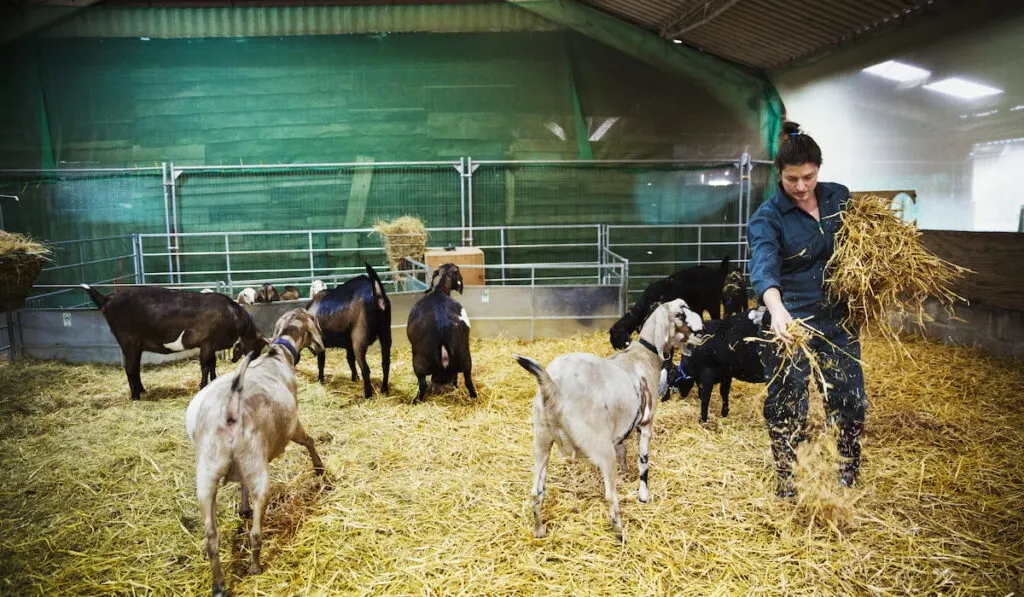
This style of flooring is done through the application of straw bedding once per week, and the litter is cleaned out once or twice a year.
This technique is popular because it is both effective, easy to maintain, and provides more material for compost.
Applying new dirt periodically allows the other layers of straw, urine, and dirt beneath to compost, subsequently providing proper insulation from the ground, especially during winter.
The problem with this method, however, is that the floor gets compacted over time and may absorb less urine and waste.
Mixing and applying new layers of straw, therefore, helps maintain the ability to hold dirt. Some goats also at times eat straw, which is generally not good.
Proper drainage is highly recommended for this method, to avoid exposure to too much moisture. After cleaning, the bedding can be transferred to compost piles.
Lime powder is also useful in keeping the urine smell out of the goat barn, as it affects the goats’ lungs. The lime also helps in preventing worms and keeps the barn clean.
2. Concrete
Concrete floors are popular because they are easy to clean and inexpensive to maintain, and when combined with mats, they provide extra comfort to the goat.
Concrete floors do not have holes or cracks that would harbor rodents and parasites, unlike wooden floors.
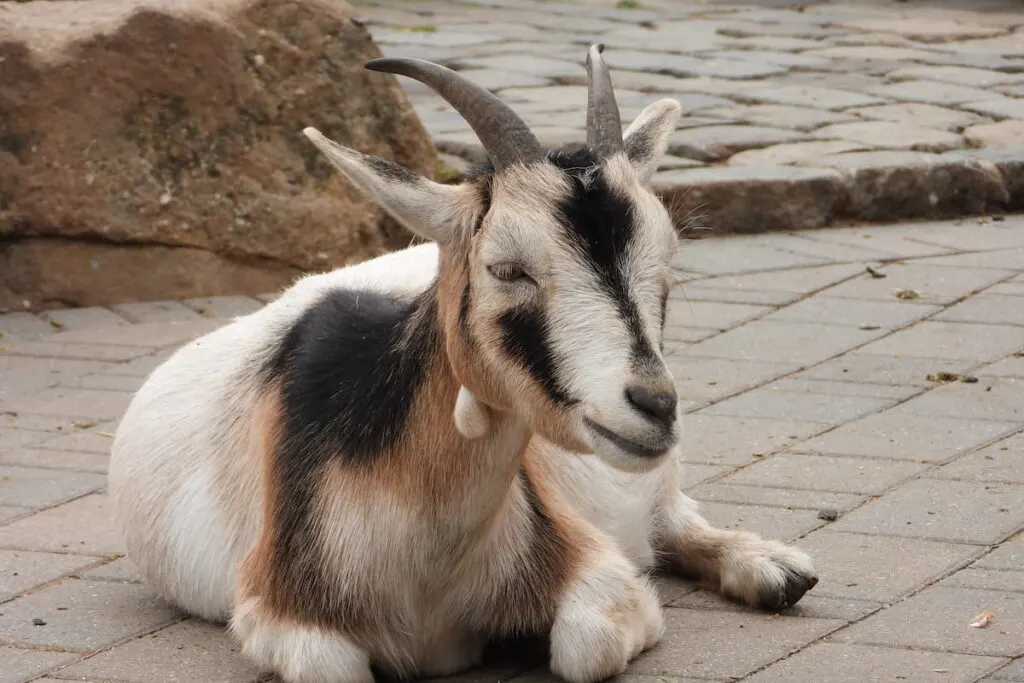
Rubber mats are the best covers for concrete floors, as they are easier to clean and dry. It also reduces the chances of diseases and infection spreading.
This method could therefore prove to be a solid solution to your goat barn. You will have to usually clean up the barn once a week.
Concrete floors might, however, be hard to warm up in winter.
Soaking can also be a problem for rubber mats if not regularly monitored or drainage paths not put in place.
Rambunctious goats could also get too excited and jump or slide in the barn, and end up breaking their legs on the hard concrete.
3. Cedar Shavings/Chips
Using cedar shavings or chips as bedding is another option for your goat barn.
Some goats may, however, like chewing this bedding, and cedar might not be good for some goats. It is, therefore, recommended to stop using cedar shavings when you notice some goats chewing.
Cedar shavings might also not be as cost-effective as some other methods, since they require regular addition and replacement.
4. Wood Chips
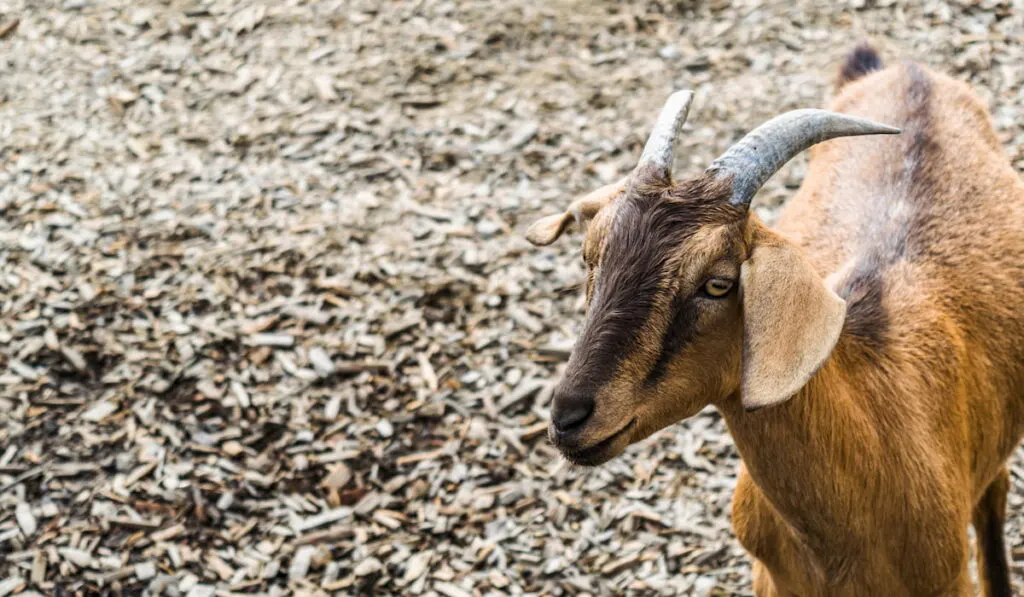
Wood chips easily absorb moisture and are effective in insulating the floor. Wood chips are easy to handle and can be easily transferred in and out of the barn during cleaning.
5. Pelleted Bedding
Also known as compressed wood bedding, pelleted beddings are mostly used in horse barns but can also be a good option for goat barns. They are easy to manage, absorbent, inedible, and relatively cheap.
6. Sandy Floors
Sand floors are good in relation to drainage. It is also more useful when applied as a bedding amendment than used as permanent bedding material. Sand is easy to maintain, as you just have to scoop out the poop daily and you are all set.
7. Rubber Mats
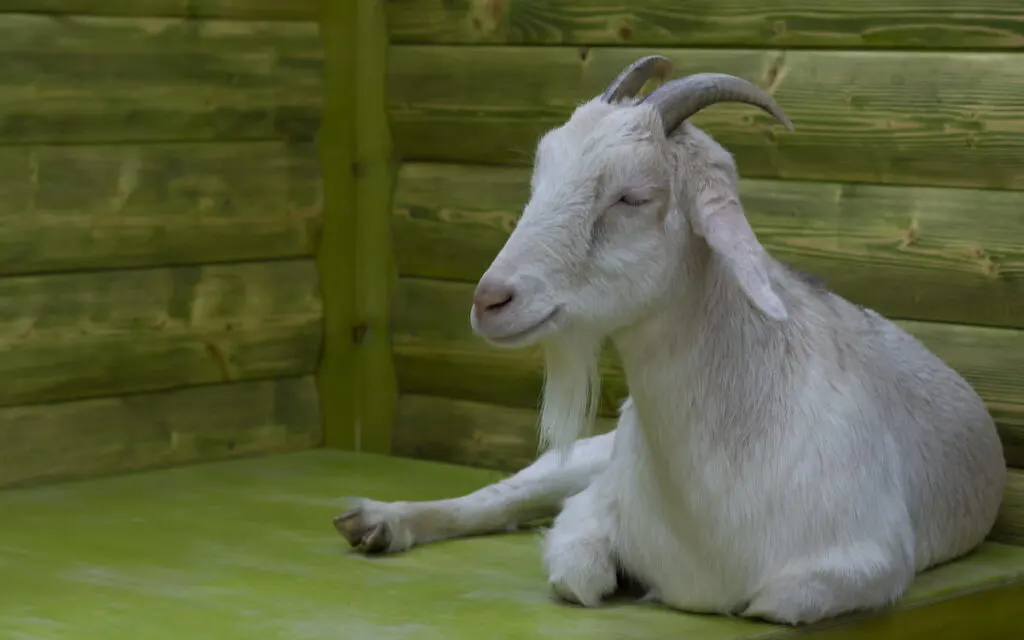
Rubber mats are popular amongst most farmers because they provide more comfort and extra warmth for the goats in the stall. Mats are also designed to protect your goat’s hooves, among other livestock’s.
Most mats have non-slip surfaces, which makes the goats less prone to injuries associated with slipping. Moisture-proof mats also reduce exposure to infections.
Here are a few popular rubber floorings for goat barns;
- Rubber Flooring Mats – They are commonly used as upper covers to enhance safety on concrete floors. They do not need an adhesive to be installed. They are also durable and economical.
They are mostly slip-resistant and provide good insulation. They can also handle the pressure of aggressive goats, and cannot fold or wear off easily.
- Rolled Rubber Floorings – These rubber floors are tough and good for your goat barn. They can handle pressure, and are extra economical, with most dealers offering rolls at discounted prices.
They are tapped down or glued to the floor. Once it is successfully installed, it requires little maintenance, which includes, but not limited to vacuuming, sweeping, and at times mopping. They are also good because they are mold, mildew, and stain-resistant.
- Button top stall mats – this mat is an excellent choice because of the non-slip feature which provides sure footing, even when the mat is wet. They are also affordable and can withstand extreme temperatures, as they are non-porous and do not hold moisture that can freeze and crack.
Conclusion
Deciding on a goat barn floor can be hard. It can however be easier to decide when you consider and factor in cleaning, and how much effort you have to put into it. Pricing is also a priority factor to consider.
With regard to your choice and how you prefer your operation to be, deep litter and dirt are suitable if you want the manure and compost to collect over a long period of time.
Concrete floors and rubber mats are good for those who want to be doing routine cleanliness, like maybe once a week.
Goats require at least a three-sided structure, which provides them shelter and shade, but with ample air circulation.
They need a way to escape adverse and extreme weather conditions like rain or snow, and some shade against harsh summer sunlight.
It is always good to get advice from other farmers or a livestock consultant on the best flooring options for your goats.
Resources
- https://couchtohomestead.com/the-best-flooring-for-a-goat-house/
- https://www.greatmats.com/mats-for-goat-barn-floor.php
- https://www.homesteadingtoday.com/threads/what-is-the-best-flooring-in-the-goat-barn.50137/
- https://farmhouseguide.com/bedding-options-for-your-goat/https://boxwoodavenue.com/raising-goats-cleaning-barn/
- https://www.thegoatspot.net/threads/pine-pellets-for-bedding.196337/
- https://www.farmrubber.com/goat
- https://www.backyardherds.com/threads/waterproofing-a-wood-goat-barn-floor-pls-advise.32858/
